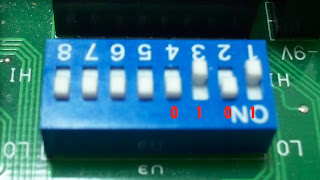In the last EE Fundamentals segment I covered Ohm’s Law and the measurements that make up the bulk of electrical theory: voltage, current, and resistance. I figured the next logical step is to start with the building blocks of circuit analysis. This entry will look at the various ways resistors can be connected in a circuit. This is a two part entry with the first part focusing solely on the way the resistance varies with these connections. The second part will look at the way voltages and currents change depending on the orientation.
Circuits are often connected in series, in parallel, or in series-parallel. When you start talking about circuit topologies these fundamentals break down somewhat, but from a hobbyist perspective these three connection types are likely the only ones you will ever need.
Series Connection
Connecting components in series means you are essentially chaining the end of one component onto the beginning of another. When you connect resistors in series from one end of a voltage source to the other, you create a pathway for current to flow and thus produce a series electric circuit. Figure 1 shows what I am talking about assuming the connecting wires are perfect conductors (i.e. zero voltage drop across them).
Figure 1. A series circuit
The total resistance of a series circuit like the one above is equivalent to the sum of all the resistances in the circuit (assuming those are the only two components present). Figure 2 shows two series circuits that have different resistances.
Figure 2. Adding resistances in a series circuit
As you can see, when a new resistor is added the circuit resistance increases by the nominal rating of the resistor. In the first circuit, the equivalent resistance is 15 kohms. The second circuit adds another 10k resistor in series with the other two creating an equivalent resistance of 25 kohms. Therefore, we can express the equivalent resistance (in ohms) of a series circuit as the sum of the all the resistances present or (where n = total number of resistances in the circuit):
Parallel Connection
Parallel circuits are the ones that I find people have the most difficulty understanding because conceptually they are not as simple as connecting one component after another like series circuits. Instead, components are said to be in parallel if they share the same electrical connection points throughout the circuit. Figure 3 illustrates this concept more clearly.
Figure 3. A parallel circuit
As you can see, three resistors are connected to both the positive battery terminal and ground.
To find the total resistance in a parallel circuit, you have to add the inverse of each resistance together and then take the inverse of the sum. The reason this is necessary becomes apparent in the voltage and current relationship, but I don’t want to get into any proofs in this entry. The total resistance in a parallel circuit can be expressed (where n = total number of resistances in the circuit):
Figure 4 shows an example of a parallel circuit as well as a demonstration of how to find the total resistance. Interesting fact about resistances connected in parallel, the total resistance of the circuit will always be less than any individual resistance in the circuit. Therefore, you can effectively reduce the total resistance of a circuit by adding a low value resistor in parallel with your circuit. The equation below shows how this works in practice.
Figure 4. A 2.5 kohm equivalent circuit
Series-Parallel Connection
A series-parallel connection is merely a combination of the two types of connections we have already gone over. All of the rules still apply from each connection.
This type of connection is used in almost every circuit out there. It is pretty rare to find a circuit that is just a parallel or just a series connection. The only difficultly in dealing with these types of circuits is identifying the individual connections within the whole and being able to sort them out. Figure 5 shows an example of a series-parallel circuit.
Figure 5. A series-parallel circuit
Let’s break down Figure 5. The two 10k resistors are connected in parallel with each other but in series with the 5k resistor. To simplify the circuit, we can condense the two 10k resistances into the equivalent resistance seen by the source using the methods mentioned earlier.
The equivalent circuit now looks like Figure 6 below. The circuit resistance is unchanged, but we made the circuit more intuitive by reducing the parallel branches into one resistor. Now, it looks like a simple series circuit where we can add the two 5k resistances together to get the equivalent circuit resistance.
Figure 6. The series equivalent circuit of Figure 5
Some Final Notes
The total resistance of a circuit can change depending on “who” is viewing the circuit. In the classic teaching example, a DC source (battery) is placed in a series-parallel circuit and you try to find the equivalent resistance. What is often left off is that they are looking for the equivalent resistance as seen by the source, also called the “input resistance”. For reference, every example I have cited so far has been asking for the input resistance. However, in cases like amplifier design both the input and the output resistance can be critically important. The “output resistance” is the resistance of the circuit as seen by the load. The same rules we have looked at in this entry apply for both input and output resistance, but you must shift your perspective from the power supply to the load receiving the power.
Pop Quiz
Let’s see how much you have learned. I put together a simple series-parallel circuit below and I would like to know the equivalent resistance as seen by the input terminals (where the arrow is). Leave your answers in the comment boxes. The numbers represent the value of the resistor they are closest to in ohms. Good luck!
















